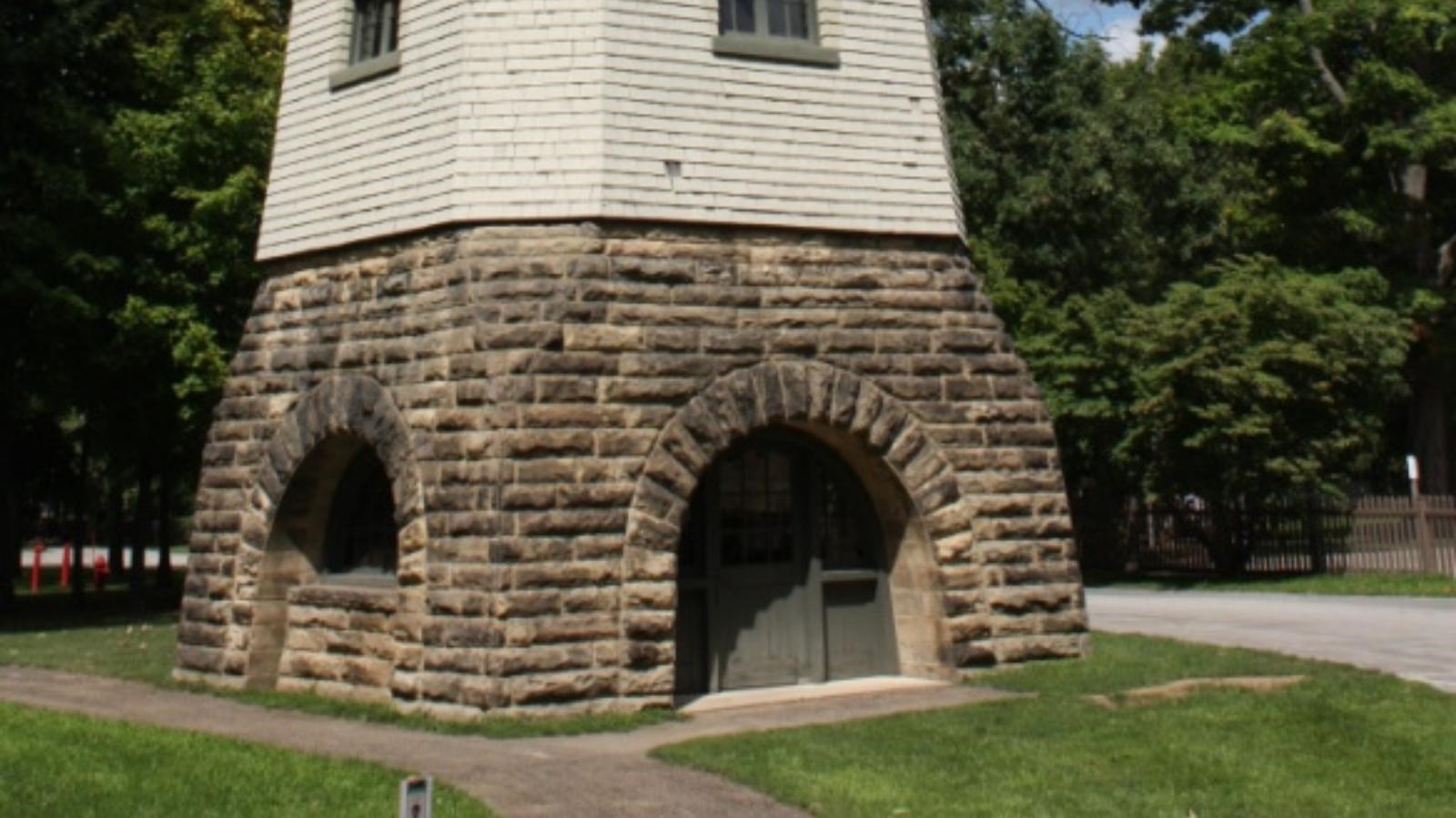Last updated: January 31, 2021
Place
Mrs. Garfield's Windmill

Quick Facts
Location:
James A. Garfield Mational Historic Site
Significance:
Built in 1894 under Mrs. Garfield's guidance
OPEN TO PUBLIC:
No
Amenities
1 listed
Historical/Interpretive Information/Exhibits
Lucretia Garfield (1832-1918) did not just stand in the shadow of her prominent husband, President James A. Garfield. A woman of strong character atypical of the Victorian lady, she showed pluck, courage, and intelligent command of situations that would have presented formidable challenges to other women of her time. After her husband’s assassination in 1881, she managed the affairs of the farm and family. Her involvement in the construction of the windmill at “Lawnfield,” her Mentor, Ohio home, did much to reveal her determined and intelligent nature.
The Evolution of a Project- Design
Problems with the main well prompted the replacement of an earlier windmill. In 1894, a new well, tower, storage tank, and larger windmill were constructed. Lucretia Garfield influenced the fine details of the project from start to finish. Letters to her sons reveal her role:
...if it is to be a permanent structure we should make it….sufficiently artistic to be in keeping with any future improvement we hope to make… Whatever we do now is of consequence to the grove as well as to the old home, and I want you all to be pleased.
-Lucretia to James R. Garfield, February 10, 1894
While Lucretia had her own opinions about the project, she was also responsive to those of various family members. She drew a design with a round tower that they rejected, perhaps for reasons of cost or style.
Evolution of a Project—Money Matters
Once the design was completed, Lucretia involved herself in the details of its construction, with the goal of keeping the costs down:
Can you explain why a tank 15 ft by 15 ft and holding 600 barrels costs not half as much as one 11 ft by 20 ft…. And holding less than 500 barrels? The former would be put up for $195.00, the latter with only a few steel beams and window guards added, for $440.00. Again, is not Mr. Reough’s estimate too large? I really cannot see how he can make such a simple structure cost more than or as much as, he would build a summer cottage for. ... I cannot afford to build an expensive tower, neither will I consent to put up a stupid, inconvenient unsightly thing.
-Lucretia to James R. Garfield, March 22, 1894
Everything you write about yourself and the home affairs made me happy, except the estimates for the tower. They were simply ridiculous. Architects and contractors all seem to conspire to get the most money for the least work. I think I will go home and oversee the whole thing myself. I built a home once, bought all the material and hired workmen and although it was in wartime, I have never done anything so cheaply since, nor ever had anything better done.
- Lucretia to James R. Garfield, April 22, 1894
Evolution of a Project– Final Construction
After several revisions of the costs, construction began. Lucretia consulted with her son Abram, an architectural student at M.I.T., about the difficulty of engineering a stone arch at the base of the windmill. With his help, the project was finally completed. Lucretia was pleased with the project, yet chagrined at the final price: $2196.00. In a final letter, Lucretia could not resist penning a comment about the value of schooling:
The arches are finished after one had been taken down three times, and a second twice. Finally they are not noticeably bad, and [the contractor] has learned a lesson. It may not have cost him as much as a year at M.I.T.] but the mortification of failing to understand such a simple principle in mathematics and thereby to have so blundered, more than offsets the cost of a little more study.
- Lucretia to Abram Garfield, June 17, 1894
Reconstructing Lucretia’s Dream
Lucretia Garfield understood the importance of the windmill to the function of her farm and home. But over the years, neglect and storm damage made the tower unsafe. It was taken down in 1939. The base was capped. The well was still used, but the structure was no longer beautiful. Through an anonymous donor the National Park Service and the Western Reserve Historical Society restored this prominent feature of the landscape. After over 4,000 hours the foundation, original stone pump house, the tower and windmill were replaced. In May 1998, the scaffolding came down. Mrs. Garfield’s dream once again stands 62 feet above the farm she and her family cherished.
Lucretia Garfield understood the importance of the windmill to the function of her farm and home. But over the years, neglect and storm damage made the tower unsafe. It was taken down in 1939. The base was capped. The well was still used, but the structure was no longer beautiful. Through an anonymous donor the National Park Service and the Western Reserve Historical Society restored this prominent feature of the landscape. After over 4,000 hours the foundation, original stone pump house, the tower and windmill were replaced. In May 1998, the scaffolding came down. Mrs. Garfield’s dream once again stands 62 feet above the farm she and her family cherished.
